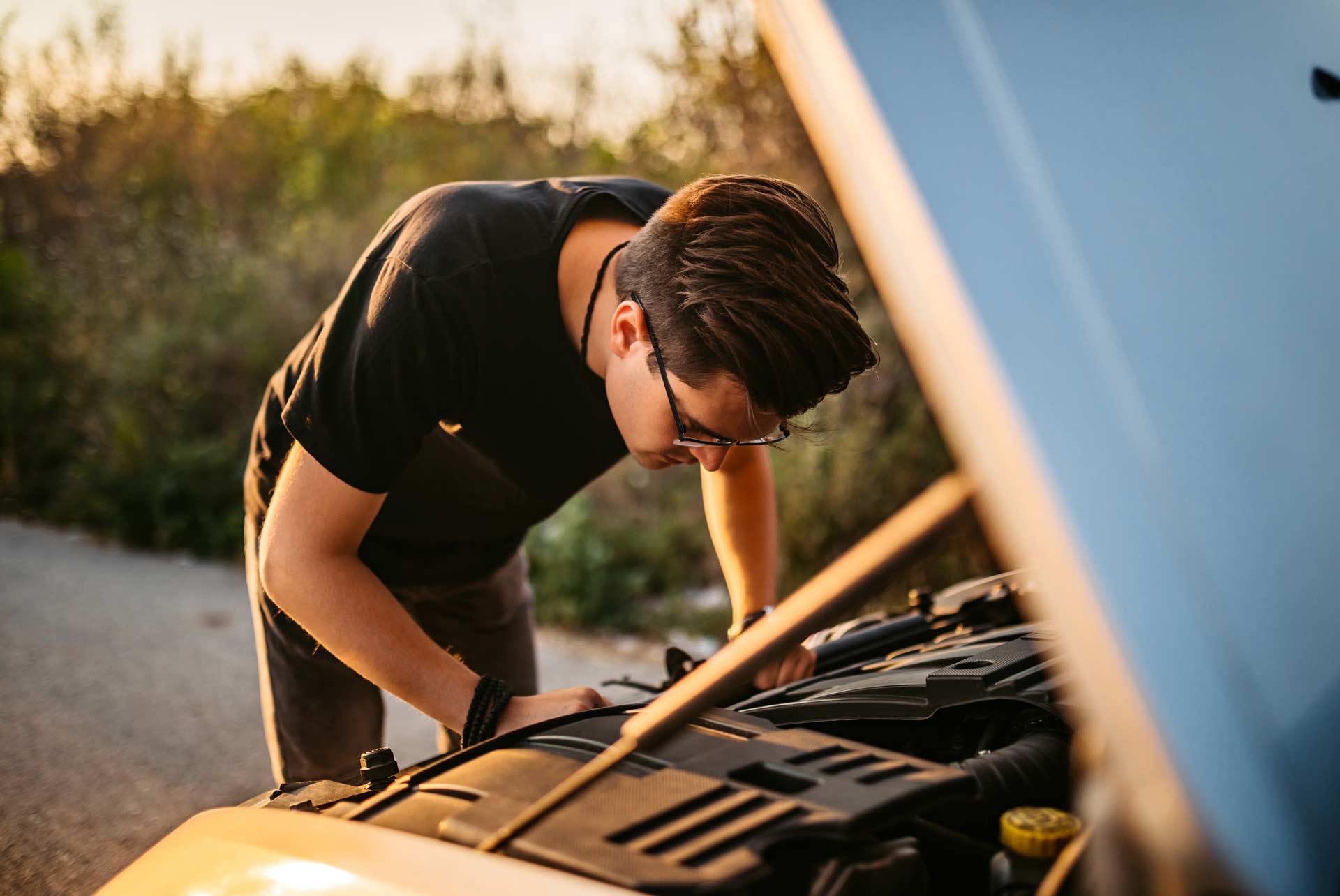
Oh No! A Leak! Common Vehicle Fluid Leaks
Some of the most common problems people encounter with their cars involve leaks. The key to fixing the leak as easily as possible is being able to correctly identify the fluid that is leaking from your vehicle. Here is an easy guide to identifying some of the most common vehicle fluid leaks.
Antifreeze – Antifreeze, also known as coolant or radiator fluid, regulates the temperature of the vehicle. In hot weather, it helps keep your engine cool, and in cold weather it prevents your engine from overheating.
- Color: Bright green or yellow. It should be noted that antifreeze can come in a variety of colors depending on who the vehicle manufacturer is.
- Texture: Sticky and slimy.
- Location: Antifreeze leaks are typically found pooled near the front of the vehicle, behind the front wheels.
- Causes: This kind of leak is typically caused by radiator corrosion, a hole in the radiator, a broken or damaged seal or gasket, or a worn out hose.
- Solution: Depending on the severity of the leak, this is a mild to severe problem that should be taken care of as soon as possible. Letting an antifreeze leak linger for too long can result in a lot more damage and risks to driver and passenger safety. Consult your mechanic as soon as possible.
Engine Oil – Motor oil is a key component to maintaining a healthy engine – it lubricates the engine’s various internal parts and keeps it running smoothly.
- Color: Dark yellow, dark brown to almost black.
- Texture: Oily, thick, and slippery.
- Location: Oil leaks are typically found near the front of the vehicle underneath the engine.
- Causes: Common causes include a hole in the oil pan, a corroded oil seal, a worn out oil filter, or a missing filler cap.
- Solution: The best solution for avoiding oil leaks (and preventing wear and tear on the related components) is regular maintenance and oil changes. The mechanic will often replace any worn down parts during routine oil changes. This is the best way to prevent long term damage.
Fuel – Fuel, or gasoline, is what powers the vehicle and keeps it moving.
- Color: Clear
- Texture: Watery, soft, and thin.
- Location: Fuel leaks are found at either the front of the vehicle or the rear of the vehicle, depending on what is causing the leak.
- Causes: If the leak is found towards the rear of the vehicle, you probably have a damaged gas tank. If the vehicle is found near the front of the vehicle, it is probably due to a fuel pump malfunction.
- Solution: The biggest issue with a fuel leak is wasted money. However, a fuel leak can still be a dangerous issue and we recommend contacting your mechanic as soon as possible.
Transmission Fluid – Transmission fluid, like motor oil, serves as a lubricant for your vehicle’s transmission system – it keeps the internal gears well-lubricated so that your vehicle shifts gears properly.
- Color: Red, pink-red, or brown.
- Texture: Oily, but thinner than motor oil.
- Location: Around the middle of the vehicle, typically just behind the front wheels.
- Causes: Some of the most common causes of transmission fluid leaks are fluid pan security issues (typically after a fluid change), a damaged pan gasket, or road debris.
- Solution: Failure to fix a transmission fluid in a timely manner can result in permanent damage to your vehicle’s transmission and will require a trip to a transmission specialist. Rebuilding or replacing a transmission can be very costly, so we recommend contacting your mechanic as soon as your vehicle begins to leak transmission fluid.
Brake Fluid – Brake fluid is an essential component to your vehicle’s braking system. The fluid assists with applying pressure to the brake pads, which in turn clamp down on the rotors, slowing the vehicle down.
- Color: Clear or yellowish, sometimes brown.
- Texture: Oily, but slicker and more slippery than motor oil.
- Location: Around the wheels or on the passenger side of the vehicle.
- Causes: Most brake fluid leaks are caused by general wear and tear of the brake components, including rubber hoses, calipers, or the wheel cylinders. You may also have worn brake pads or an issue with the vehicle’s bleeder valves.
- Solution: Brake fluid leaks are extremely dangerous and you should stop driving your vehicle immediately. We recommend getting the vehicle towed to your mechanic to have the fluid replenished.
Whether it’s a simple issue such as a leaky fuel tank or a more serious issue like a brake malfunction, being able to identify what’s leaking from your vehicle will make fixing the issue an easier and less stressful experience.
Check back regularly for more articles about car maintenance and auto body repair. In the meantime, if you have any questions or inquiries about auto insurance coverage or auto body repairs in general, feel free to call us at (630) 526-7117 or email us at info@parkvilleautobody.com. We hope to hear from you soon.